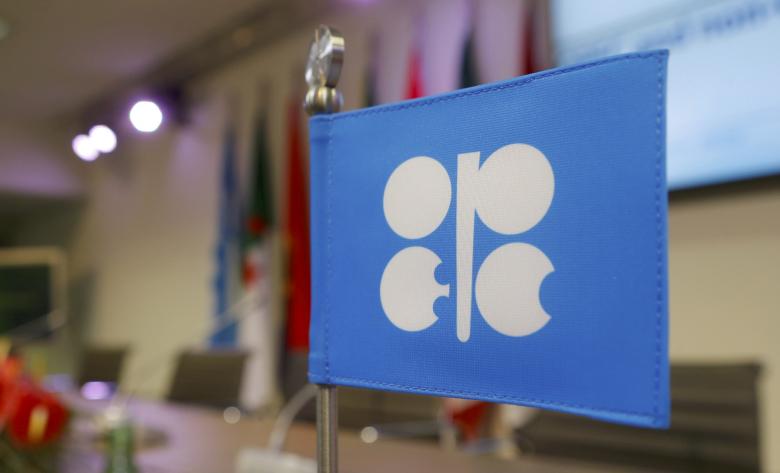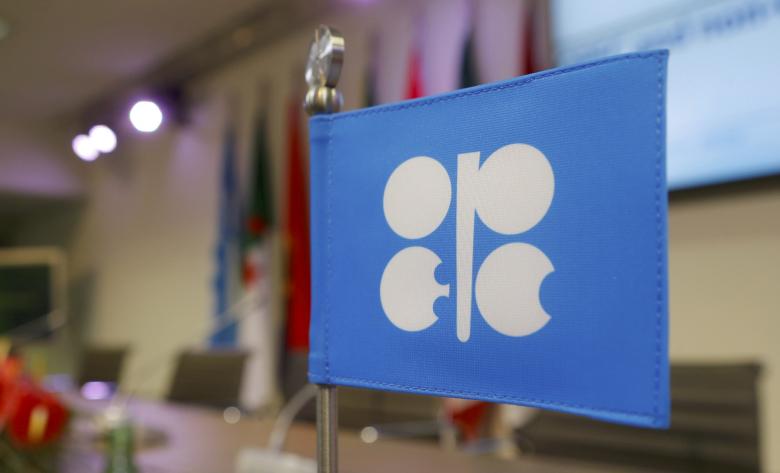OPEC compliance with oil curbs rises to 94 percent in February: Reuters survey

FILE PHOTO – A flag with the Organization of the Petroleum Exporting Countries (OPEC) logo is seen before a news conference at OPEC’s headquarters in Vienna, Austria, December 10, 2016. REUTERS/Heinz-Peter Bader

(Reuters) OPEC has cut its oil output for a second month in February, a Reuters survey found on Tuesday, allowing the exporter group to boost already strong compliance with agreed supply curbs on the back of a steep reduction by Saudi Arabia.
The Organization of the Petroleum Exporting Countries is cutting its output by about 1.2 million barrels per day (bpd) from Jan. 1 – the first such deal since 2008 to get rid of a glut. Non-OPEC countries pledged to cut about half as much.
Previous OPEC cuts have been mired in mass cheating by its members, making strong compliance by OPEC this time a positive surprise for the market, with prices trading above $55 per barrel — up from $35 a year ago.
Top exporter Saudi Arabia and its Gulf allies are hoping the cuts will help oil rise a bit further to around $60, five sources from OPEC countries and the oil industry said, to boost exporters’ income and industry investment.
“If compliance is high by OPEC and non-OPEC, then I think prices will reach $60,” said an OPEC delegate. “If it was higher it would be better, but $60 is fine.”
In January, OPEC delivered 82 percent of the promised cuts, according to a Reuters survey and over 90 percent according to OPEC’s own report.
The International Energy Agency has said it was impressed with OPEC’s compliance, calling it a record level.
In February, supply from the 11 OPEC members with production targets under the deal has averaged 29.87 million bpd, down from a revised figure of 29.96 million bpd in January and 31.17 million bpd in December, according to the Reuters survey.
Compared with the levels the countries agreed to make the reductions from, in most cases their October output, this means the OPEC members have cut output by 1.098 million bpd of the pledged 1.164 million bpd, equating to 94 percent compliance.
The Reuters survey showed Saudi Arabia’s output fell slightly in February from an already deep reduction in January taking the total curb achieved to 744,000 bpd, well above the target cut of 486,000 bpd.
Thus, Saudi Arabia continued to compensate for the weaker adherence of other members, including Algeria, Iraq, Venezuela and even its key ally the United Arab Emirates, which cut output by 33,000 bpd — well below the target reduction of 139,000 bpd.
Iraq trimmed exports from its southern ports in February, boosting its compliance, the survey found, and shipping schedules suggest exports may fall more in March.
UAE officials and industry sources say the UAE will move closer to its OPEC target in coming months, improving average compliance during the six-month duration of the supply cut rather than focusing on month-by-month performance.
Iran’s production was up slightly in February versus January even though the country is effectively excluded from output cuts. Nigeria, which is also excluded from cuts, raised output while Libya was flat month-on-month.
OPEC announced a production target of 32.5 million bpd at its Nov. 30 meeting, which was based on low figures for Libya and Nigeria and included Indonesia, which has since left the group.
The increases in February mean OPEC output has averaged 32.19 million bpd, about 440,000 bpd above its supply target adjusted to remove Indonesia.
The Reuters survey is based on shipping data provided by external sources, Thomson Reuters flows data, and information provided by sources at oil companies, OPEC and consulting firms.
